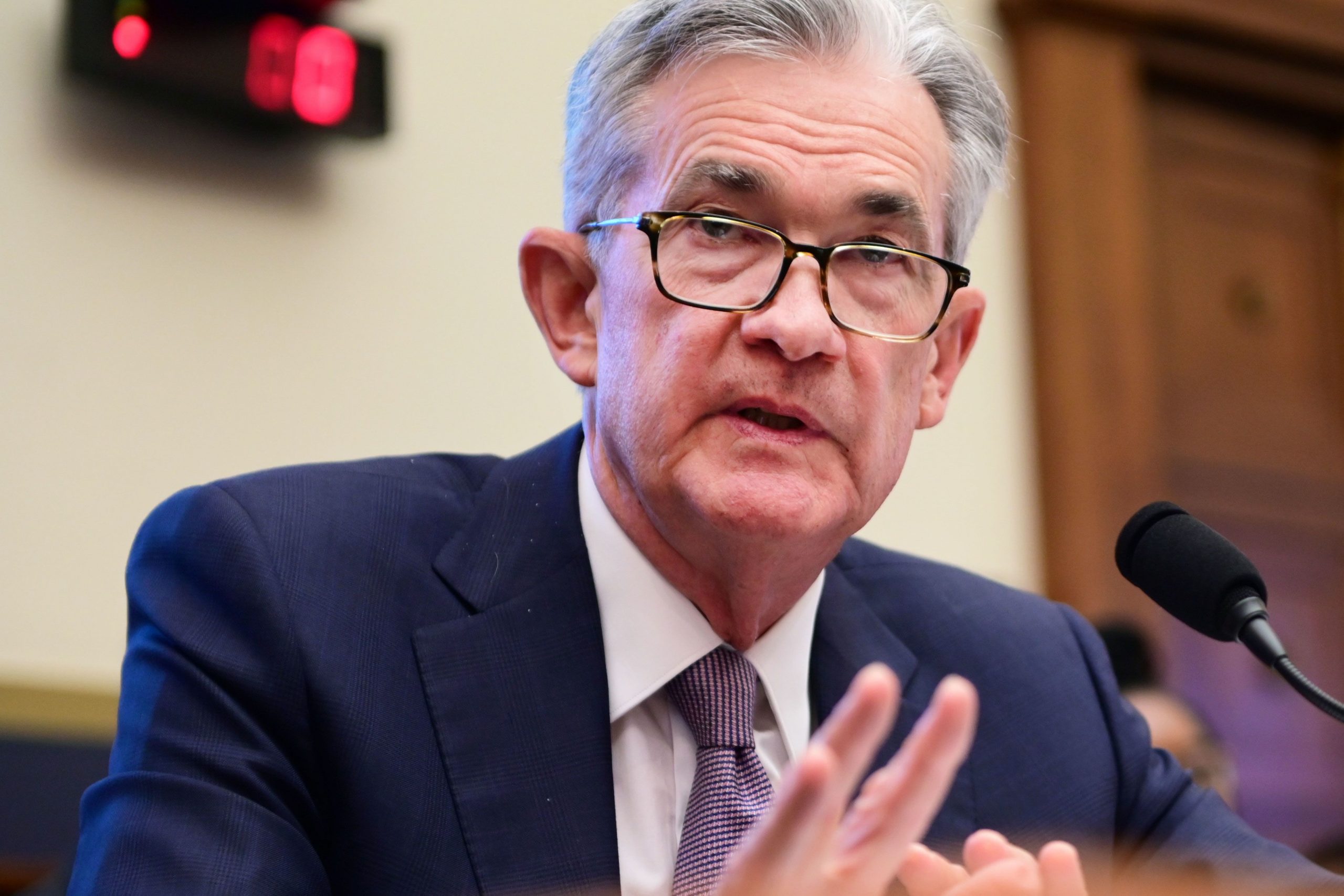
Federal Reserve Chairman Jerome Powell testifies during a House Financial Services Committee hearing on “Monetary Policy and the State of the Economy” in Washington, July 10, 2019.
Erin Scott | Reuters
The Fed is expected to move ahead to cut interest rates by a quarter point Wednesday after second quarter GDP shows inflation is still sluggish and trade wars are impacting business and trade.
GDP rose 2.1%, down from 3.1% in the first quarter but better than the 2% expected by economists surveyed by Dow Jones. The report revealed a much stronger than expected consumer, with consumption up 4.3%, the best since the fourth quarter of 2017.
Market strategists said while growth was better than expected, the components of the report could justify the Fed’s desire to cut interest rates as a type of ‘insurance’ against a slowdown. Inflation is tame, but the trade war is taking a toll on business, with exports down 5.2%.
Core PCE inflation, followed closely by the Fed, rose 1.8%, was still below the Fed’s 2% target. However, inflation was stronger than the 1.1% in the first quarter, which was revised a tenth of a percentage point lower.
“We have a very tight labor market. We have ongoing wage gains. We have strong consumer optimism. That combination should lead to solid consumption, but because of the lack of inflationary pressure, the Fed has space to ease policy to extend the cycle,” said Jon Hill, rate strategist at BMO.
On the business side, gross private domestic investment fell 5.5%, the worst decline since Q4 in 2015 as spending on structures fell 10.6%. The decline wiped a full percentage point from the final GDP number.
“Business spending was hit,” said Hill, noting that government spending helped support it. “The forward looking risks are still there. There are still risks around the trade war. There’s risks around Brexit. There are risks around a deteriorating global economy,” said Hill.
The market consensus has been firmly of the view the Fed will cut rates by a quarter point, though some strategists say it could be 50 basis points, and comments from New York Fed President John Williams last week stirred up speculation of a more aggressive Fed.
After the GDP report, bond yields temporarily rose, with the 10-year reaching a high of 2.10% before slipping back down to 2.07%. The fed fund futures reflect a less than 20% probability of a half percentage point cut next week and more than 80% odds of a quarter point cut.
“The trade war has screwed up the pacing of inventory accumulation. There’s a reason we had a really huge build in Q1,” said Tom Simons, money market economist at Jefferies. “Some businesses that were going to see tariffs or see price increases were going to bring it forward…By the same token you can see a deceleration or depletion of inventories as people sell off stuff … It’s definitely caused a disruption.”
The Fed has said it was worried about slowing global growth, the possible impact of trade wars and low inflation. It has also said it would act to extend the economic expansion, if needed.
“Anybody who was looking for 50 basis points should abandon that expectation after this number today,” said Simons.
Join to ourTrading at home group


 Signal2forex.com - Best Forex robots and signals
Signal2forex.com - Best Forex robots and signals




